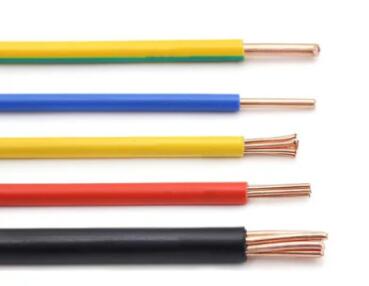Wire Gauge and Electrical Conductivity: Unraveling the Relationship
2023-11-28
Introduction:
In the intricate world of electrical systems, where the flow of electrons powers our devices and lights up our lives, the gauge of a wire emerges as a critical factor influencing the efficiency and performance of electrical circuits. The term "gauge" refers to the thickness or diameter of a wire, and it holds a direct correlation with the wire's electrical conductivity. In this blog, we will delve into the relationship between wire gauge and electrical conductivity, unraveling how the size of a wire can significantly impact its ability to conduct electrical current.
Understanding Wire Gauge:
Wire gauge is a numerical measurement that represents the size of a wire. It is typically denoted by a gauge number, and as the gauge number decreases, the wire diameter increases. The American Wire Gauge (AWG) system is commonly used to standardize wire sizes in the United States, while other regions may use different gauge systems. The gauge of a wire is a critical parameter that affects its electrical conductivity, resistance, and overall performance.
1. Inverse Relationship:
The gauge of a wire and its electrical conductivity share an inverse relationship. In simple terms, smaller gauge numbers correspond to larger wire diameters, resulting in higher electrical conductivity. Conversely, larger gauge numbers indicate thinner wires with lower conductivity.
2. Cross-Sectional Area:
The cross-sectional area of a wire is a key factor influencing its conductivity. As the wire diameter increases (lower gauge number), the cross-sectional area also increases. A larger cross-sectional area provides more pathways for electrons to flow, resulting in improved electrical conductivity.
3. Resistance:
Electrical resistance, which opposes the flow of current, is inversely proportional to electrical conductivity. Thicker wires with lower gauge numbers have lower resistance, allowing for the efficient flow of electrons. Higher gauge numbers correspond to thinner wires with higher resistance.
4. Power Dissipation:
Thicker wires with lower gauge numbers are better at dissipating heat generated during the flow of electrical current. This is crucial in applications where power dissipation needs to be managed to prevent overheating.
5. Voltage Drop:
The gauge of a wire also influences voltage drop, which is the decrease in voltage along the length of the wire. Thicker wires with lower gauge numbers experience less voltage drop, ensuring that the intended voltage reaches the destination.
Practical Implications:
The choice of wire gauge is crucial in various electrical applications, and it depends on factors such as the amount of current the wire will carry, the distance of the electrical run, and the specific requirements of the circuit. Thicker wires (lower gauge) are commonly used for high-current applications, such as in power distribution systems, where minimizing resistance and voltage drop is essential.
Conclusion:
In the intricate dance of electrons through electric wires, the gauge emerges as a critical choreographer, influencing the wire's electrical conductivity and overall performance. Understanding the relationship between wire gauge and electrical conductivity is essential for selecting the right wire size in various applications. As we navigate the complexities of electrical engineering, the gauge of a wire remains a key factor in ensuring the efficient and reliable flow of electrical current that powers our modern world.



